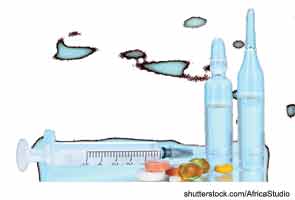
SNOWMASS, COLO.—Audience participation was enthusiastic during a session titled, “Panel on Therapy,” here at the ACR Winter Rheumatology Symposium, held January 26–February 1, 2013. Four experts convened onstage to respond to questions about current therapies for rheumatic disease. The panel included the moderator, Michael E. Weinblatt, MD, John R. Riedman Professor of Medicine at Brigham and Women’s Hospital in Boston, Mass., as well as Christopher T. Ritchlin, MD, MPH, professor of medicine at the University of Rochester Medical Center in Rochester, N.Y.; Joel M. Kremer, MD, director of research at the Center for Rheumatology, Albany, N.Y.; and Eric L. Matteson, MD, chair of the division of rheumatology at the Mayo Clinic in Rochester, Minn. Topics of discussion ranged from biologics to combination therapy, and the foursome frequently cited research findings to support their recommendations, reinforcing the importance of understanding the evidence and not extrapolating beyond it.
Zoster Vaccination
To start the evening session, Dr. Weinblatt posed a question to the panel regarding appropriate timing for starting a biologic after a patient receives the zoster vaccine. Drs. Matteson and Weinblatt agreed that four weeks was a reasonable timeframe. “Data from the literature suggests that is an adequate period to ensure that there’s not going to be dissemination, but it’s not a hard rule,” Dr. Matteson stated.
Dr. Weinblatt noted that the Centers for Disease Control and Prevention recently changed its guidelines regarding the shingles vaccine and now allows patients who are taking low-dose corticosteroids and low-dose methotrexate to be vaccinated. He uses it routinely in patients starting methotrexate, and recommends that his patients under age 50 get the vaccine. “It’s only 50–60% effective, but if I’m going to place you on another drug down the road, now’s the time to do it rather than waiting,” he said.
Because zoster is a live vaccine, Dr. Weinblatt recommended holding anti–tumor necrosis factor (TNF) medications and other biologics for a month before and after vaccination. Inactivated zoster vaccines also are under development, Dr. Weinblatt added.
Complications: Infections and Ulcers
Immune suppression, infections, and nonhealing ulcers can complicate therapy decisions. For example, RA patients who are taking biologics are at risk for developing atypical Mycobacterium infection (Mycobacerium intracellulare [MAI]), Dr. Weinblatt noted. For an RA patient who is well controlled on methotrexate and develops MAI, taking the patient off infliximab results in the RA flaring. The panel was asked what to do next.
Dr. Matteson would start by treating the infection and prescribing steroids. Depending on the degree of disease, he would continue with low-dose prednisone or possibly use triple therapy, but probably would not rush to resume infliximab. Dr. Kremer agreed about not going back to the biologic too quickly and added that he would treat the patient with standard disease-modifying antirheumatic drugs (DMARDs). Dr. Ritchlin concurred, adding that he might hold off on the prednisone.
Some panelists recommended continued antibiotic use and switching to abatacept as the biologic of choice. This recommendation was based on lower rates of Mycobacterium infections in the clinical trials and positive animal data. Another biologic that was discussed was rituxan as an alternative in this setting.
Another potential complication in RA patients, nonhealing ulcers, highlights the potential of working at cross-purposes with other specialties. The rheumatologist may be asked to discontinue a patient’s DMARD therapy to facilitate healing of pretibial ulcers, for example. Many ulcers that are seen in RA are immune and will do better when steroids are discontinued, Dr. Kremer said, but he would not hold methotrexate because that could result in worsening of the disease—which he has seen in practice.
“For management, I endorse what [Dr. Kremer] said and recommend that you evaluate these patients very carefully for underlying physiology of the ulcer,” Dr. Matteson said, which likely means performing a biopsy.
Options for Methotrexate
Although methotrexate is a popular therapy in rheumatic disease, it is not always effective. Options for addressing this are to switch to subcutaneous therapy or to another drug.
A “failed study” from 2011 that looked at methotrexate in patients with psoriatic arthritis (PsA) showed no increased efficacy of the drug versus placebo with 15 mg per week, Dr. Ritchlin said. Although this study used a low dose of the drug and had a high dropout rate, “none of us are thrilled with the results in our offices with psoriatic arthritis patients,” he said. “There is a subset of patients who may respond to methotrexate, so we do use it, although we don’t have evidence to support this approach.” He suggested monitoring for four to six months and then adding an anti-TNF or switching all together if there is no response.
To ensure the patient absorbs therapeutic doses of methotrexate, switch to subcutaneous administration, Dr. Kremer said. The bioavailability of oral methotrexate declines by as much as 17% when the dosage reaches 15 mg per week, compared to 100% bioavailability at 7.5 mg.
It is important to give subcutaneous methotrexate the same day each week, Dr. Kremer said. Splitting the dose up on multiple days can lead to toxicity (e.g., bone marrow, gastrointestinal, hepatic), as compared to once-a-week dosing, Dr. Weinblatt added.
Cardiovascular Risk: Anti-TNF, Steroids
Regarding how cardiovascular risk factors in to the decision to use anti-TNFs for an HLA B27–positive patient with inflammatory arthritis, Dr. Ritchlin recommended having a discussion with the patient about the evidence that carotid artery intimal medial wall thickness declines in PsA patients on these agents. There is no evidence yet on patients with other forms of spondylarthritis, he added.
The major comorbidity with COBRA is cardiovascular disease, Dr. Kremer noted. COBRA, based on the Dutch acronym Combinatie therapie Bij Rheumatoide Arthritis, is a combination therapy for treating early RA that consists of three DMARDs, including methotrexate, sulfasalazine, and an initial period with a high dose of prednisolone (60 mg/d tapered in six weeks to 7.5 mg/d). Although it has not been investigated thoroughly enough, Dr. Kremer said, he cited a paper by Greenberg et al that showed there is an increasing risk for CV disease with prednisone doses of >2.5 mg per day.1 “It’s irresponsible to advocate those doses of steroids until someone does know [what the implications are],” he said.
Serial Testing: Immunoglobulin, Imaging
The general consensus among the panelists is that when it comes to immunoglobulin testing in patients on rituxan, serial testing is generally not helpful or cost effective. Measuring immunoglobulin levels in patients on chronic rituximab at the outset of treatment is valuable, Dr. Matteson said, because patients who already have low levels before starting rituximab are at a higher risk of infection. However, the panelists agreed that if immunoglobulin levels decline over time as evidenced by serial testing, that information is not useful for guiding treatment.
Serial imaging—X-ray, ultrasound, and magnetic resonance imaging—are prescribed in guidelines for patients who have RA or PsA, Dr. Weinblatt said, but “is it cost effective or would it change what we do?”
Dr. Matteson and Dr. Kremer came down firmly on the con side of the argument, especially for patients with stable disease. It depends on the patient, according to Dr. Ritchlin. “If you have a patient with [PsA] who achieves minimal disease activity on anti-TNF, we’re not going to be repeating imaging studies,” he said. “For patients with evidence of active disease, we will [repeat imaging studies] to ascertain whether there’s ongoing inflammation that we’re missing and to look for progressing erosions.”
Kimberly J. Retzlaff is a medical journalist based in Denver.

